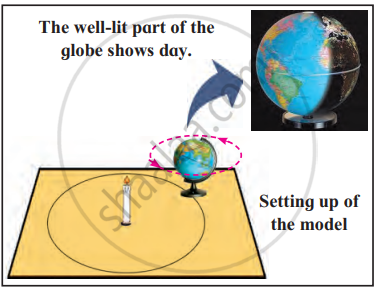To understand how the Earth's rotation causes day and night.
- Place a candle in the centre of a table to represent the sun and keep the room dark.
- Position a globe around the candle, representing the Earth.
- Light the candle and observe how one side of the globe is lit (day) while the other remains dark (night).
- Slowly rotate the globe anticlockwise (west to east) and notice how different areas move into the light (sunrise) and out of the light (sunset).
- This movement shows how the Earth’s rotation causes the cycle of day and night for different places on the planet.


